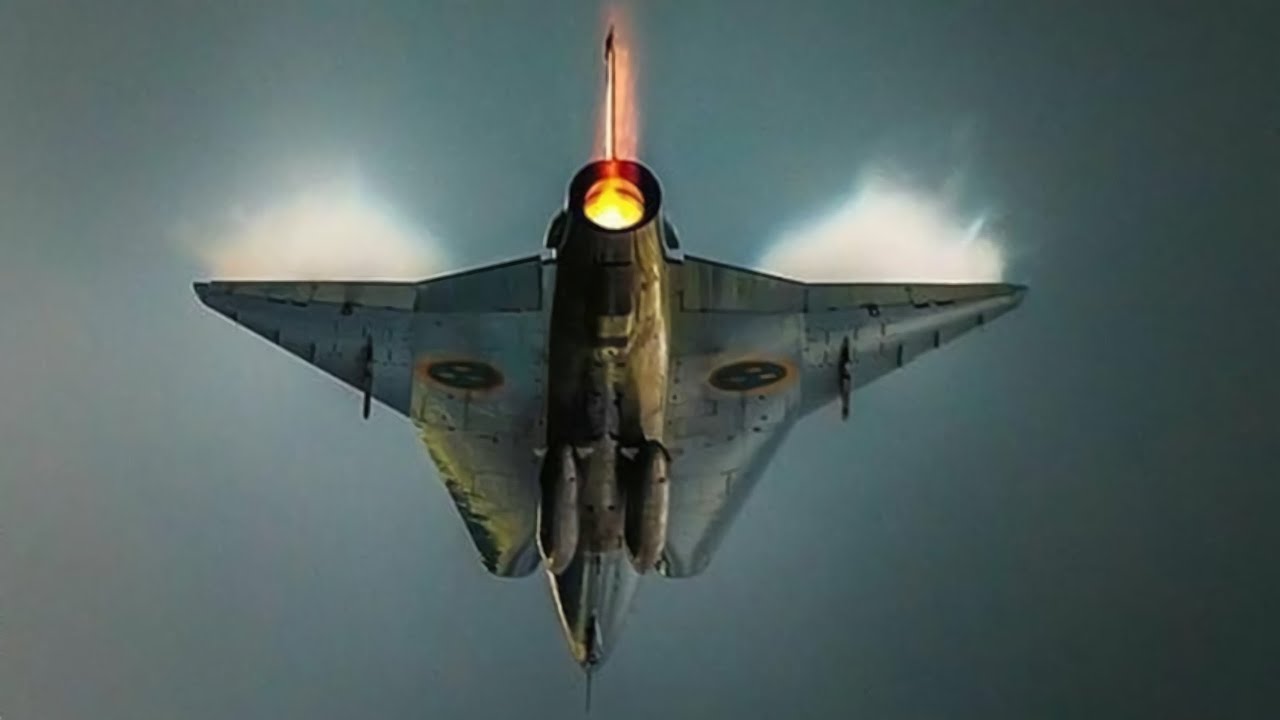Given the capabilities of the Lockheed Martin F-35 today, and the advancements that will be in the Northrop Grumman B-21 Raider when it enters service in the coming decade, it may be hard to remember how we reached this point. This is most notable in the extreme technological leaps seen from the late 1930s to the early 1950s – when aircraft went from having open cockpits and fixed landing gear to pressured systems and jet engines.
Among the combat aircraft that must have been seen as a technological marvel of the ages was the Saab-35 Draken (Dragon), an aircraft fittingly described in a 1950s journal as “the epitome of European-developed integrated weapons systems.” Though it would be fair to suggest that any airplane could fit such a description, the Saab 35 was developed when civilian airliners still utilized turboprop engines.
Its unique design was arguably years ahead of most fighters in service at the time.
Saab 35: Double Delta Innovations
Swedish aviation pioneer Erik Bratt and a team of more than 500 technicians and engineers arrived at the then-unique “double delta” shape after studying the different ways of packing the fuel and equipment. It was determined that the best arrangement was to create a long aircraft with a very small front area.
The double-delta wing comprised conventional delta outer panels joined to a large inboard portion lying in the lee of fixed-geometry oval engine inlets and extended all the way back to the engine nozzle. Trailing-edge surfaces comprised four elevons, which were fully powered and fitted with sensitive auto-stabilization. Much of the skin was also an adhesive-bonded honeycomb, which proved to stand up well to combat service even in harsh environments.
Entering Service
The first Saab 35A prototype finally took to the skies on October 25, 1955, and it became the early production model. Because of the then-historically unproven tailless design, the aircraft experienced a number of problems at the start of its service life – including a number of super stalls.
As a result, pilots were trained to prevent that from happening, and out of the extensive pilot training came what is known as a “cobra maneuver,” where the plane flying at a moderate speed can abruptly raise its nose to a vertical and slightly past vertical attitude, momentarily stalling the plane, before making a full-body air brake and then dropping back to normal position. It is a maneuver that became a crowd-favorite at airshows.
Of course, the plane was designed to defend Sweden against the then-Soviet Union if war ever broke out.
During the Cold War, the Saab 35 proved to be an effective supersonic interceptor and capable dogfighter. It was one of the first Western European-built combat aircraft to exceed Mach 2 in level flight.
The Saab 35 went through a series of upgrades, and in total 651 were produced.
It was adopted by the Swedish Air Force and was later exported to Finland, Austria, and Denmark. The final Saab 35 Draken, in service with the Austrian Air Force, was only retired in 2005 – a testament to its effective design and capabilities. While the aircraft never saw actual combat, it would have likely performed well in its interceptor role against Soviet bombers and more than held its own against the Soviet fighters of the era.
Author Experience and Expertise: A Senior Editor for 19FortyFive, Peter Suciu is a Michigan-based writer. He has contributed to more than four dozen magazines, newspapers, and websites with over 3,200 published pieces over a twenty-year career in journalism. He regularly writes about military hardware, firearms history, cybersecurity, politics, and international affairs. Peter is also a Contributing Writer for Forbes and Clearance Jobs. You can follow him on Twitter: @PeterSuciu.

